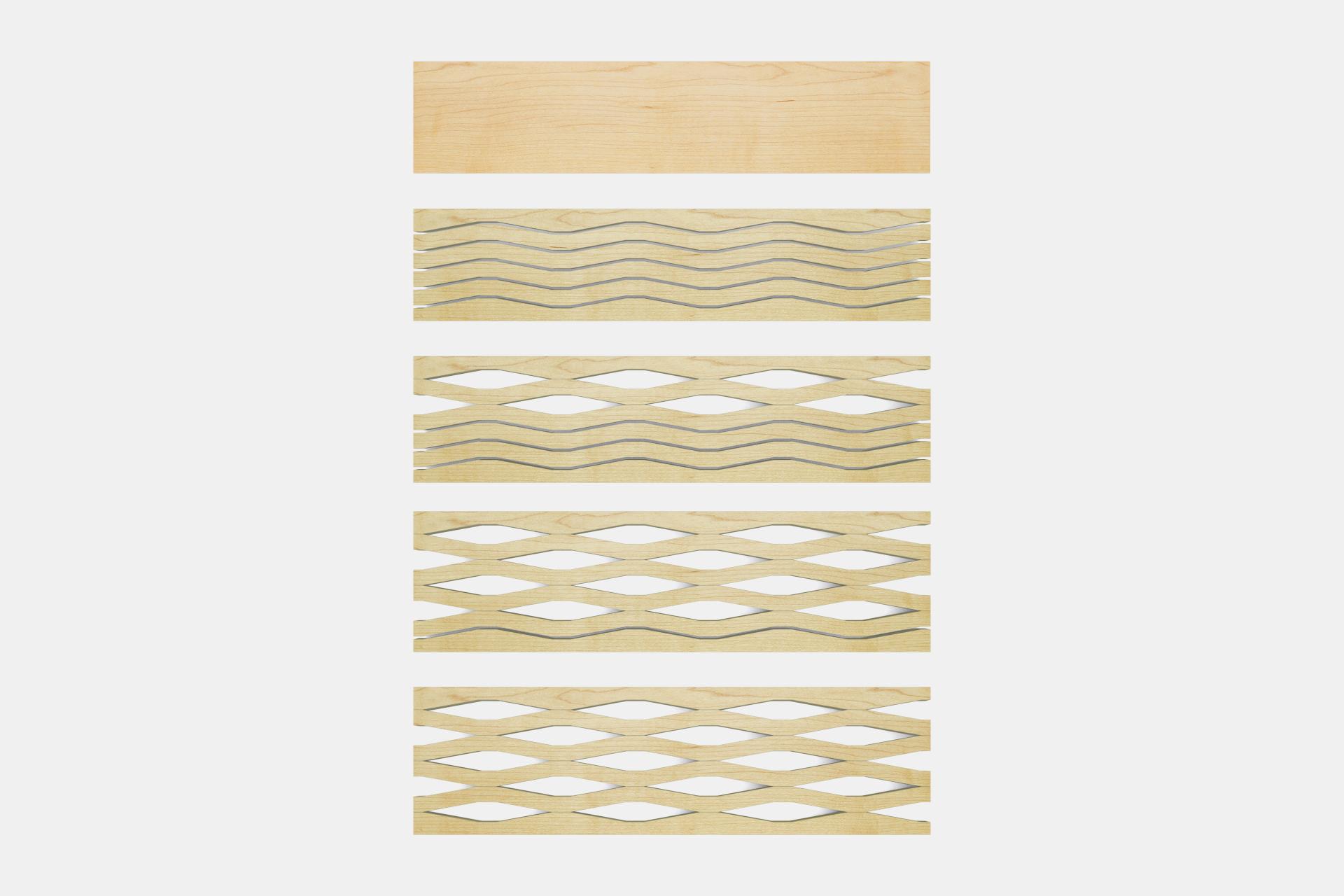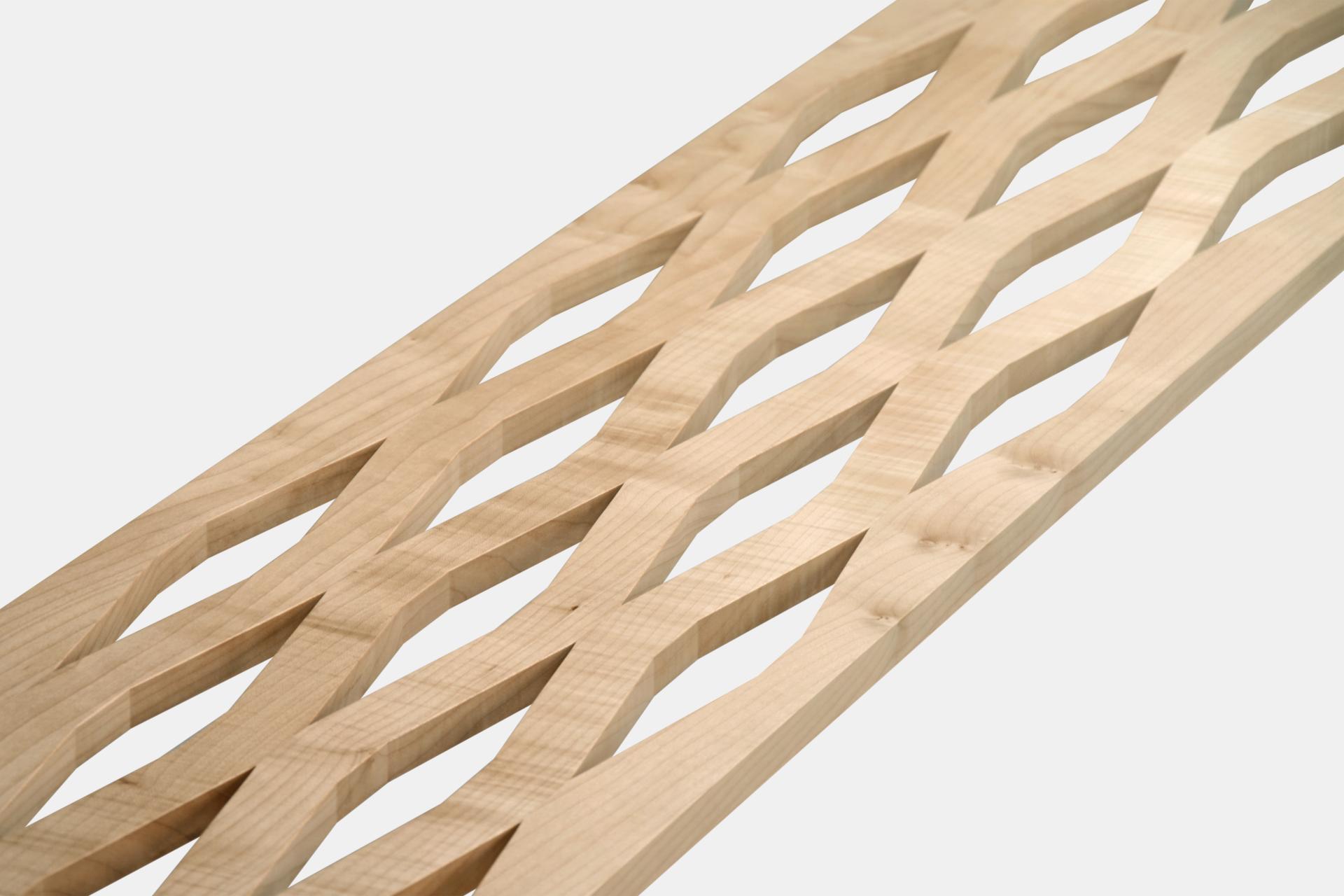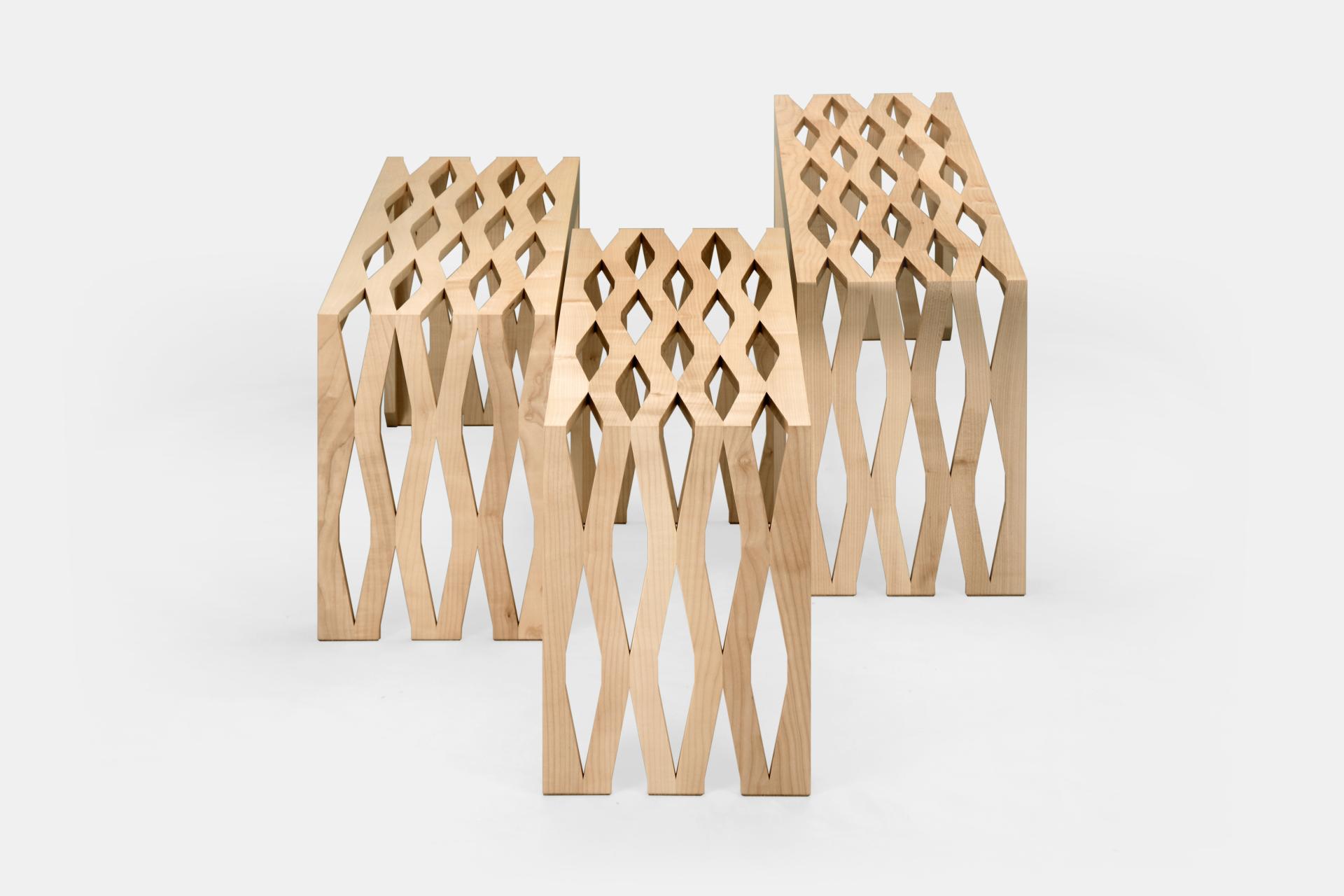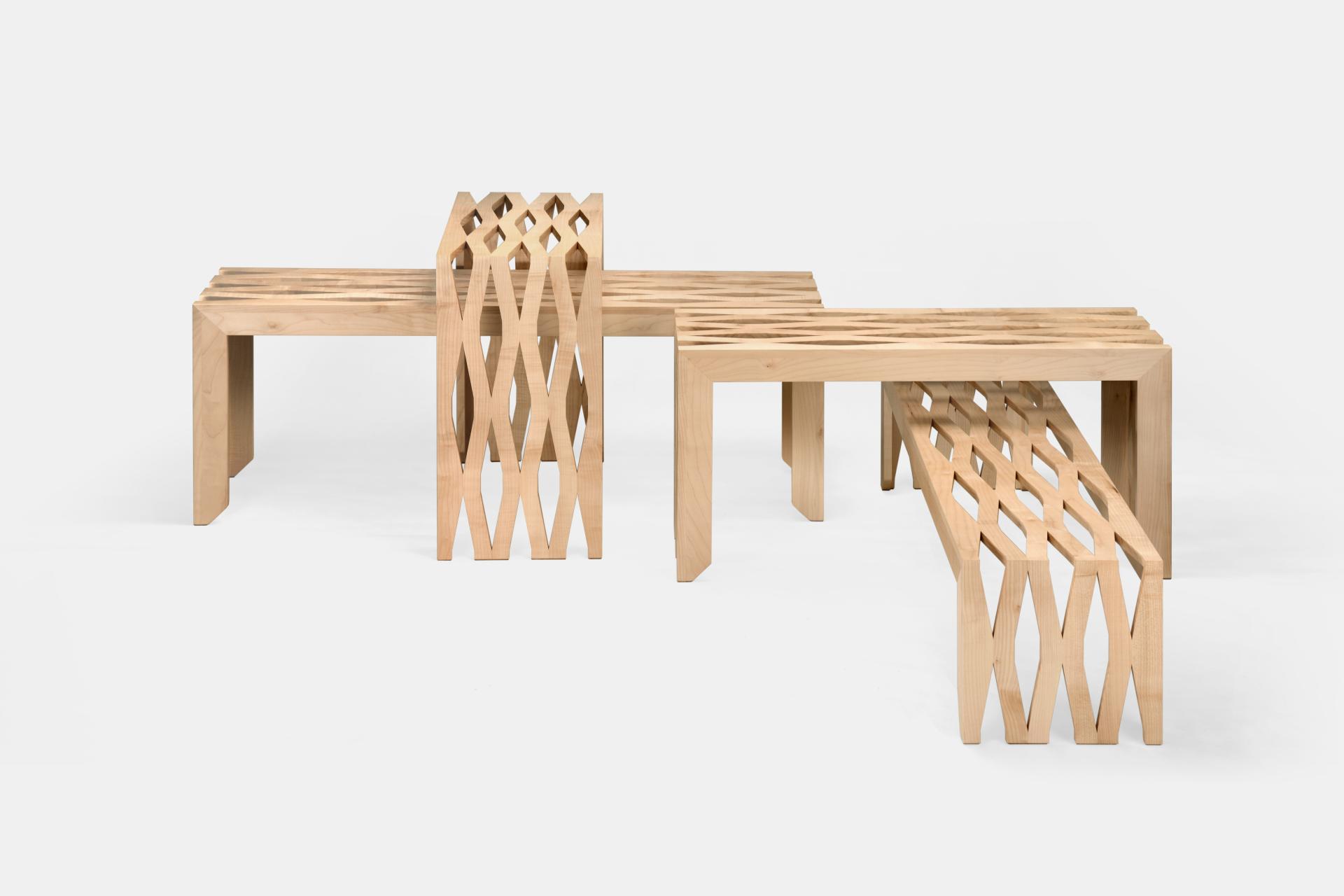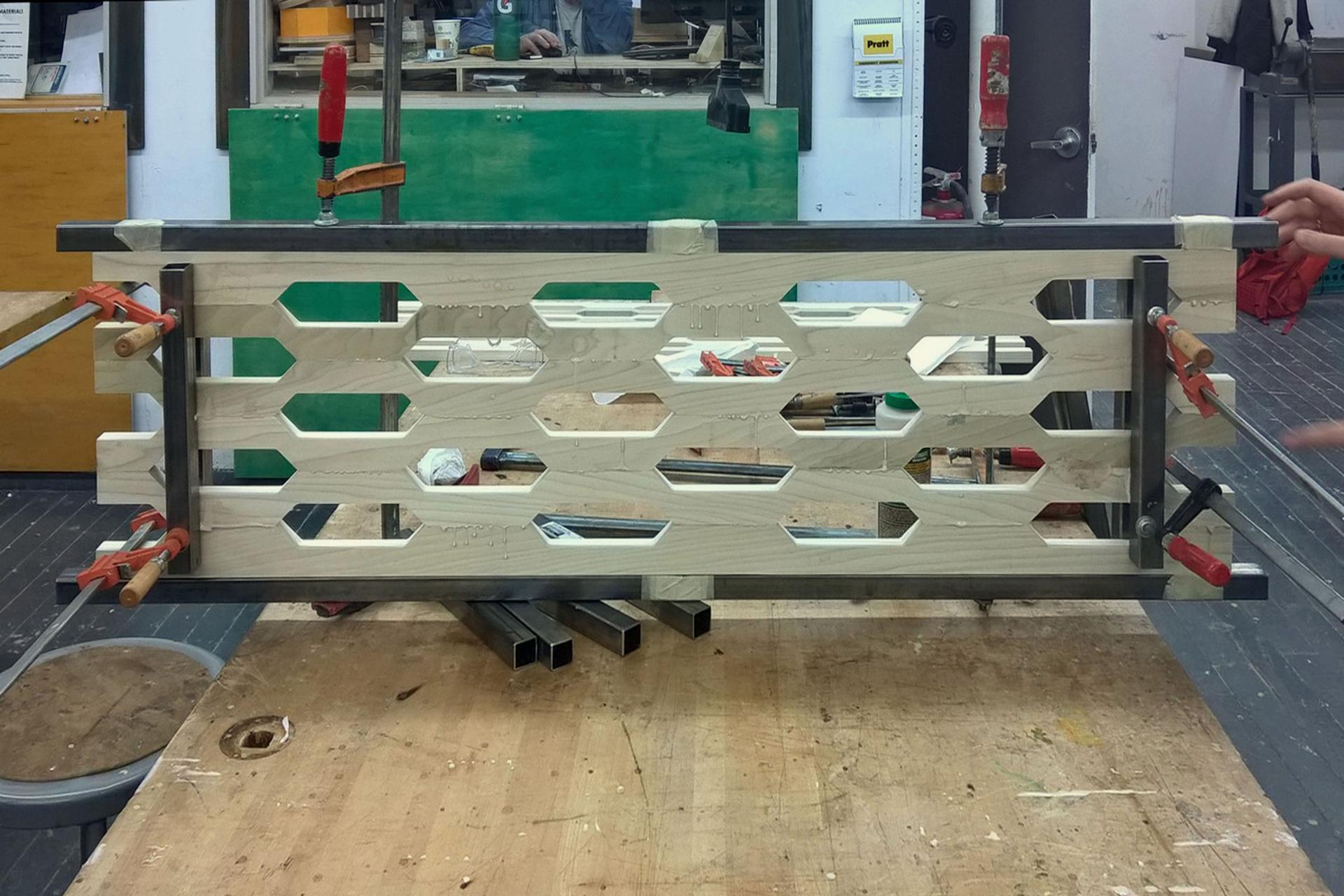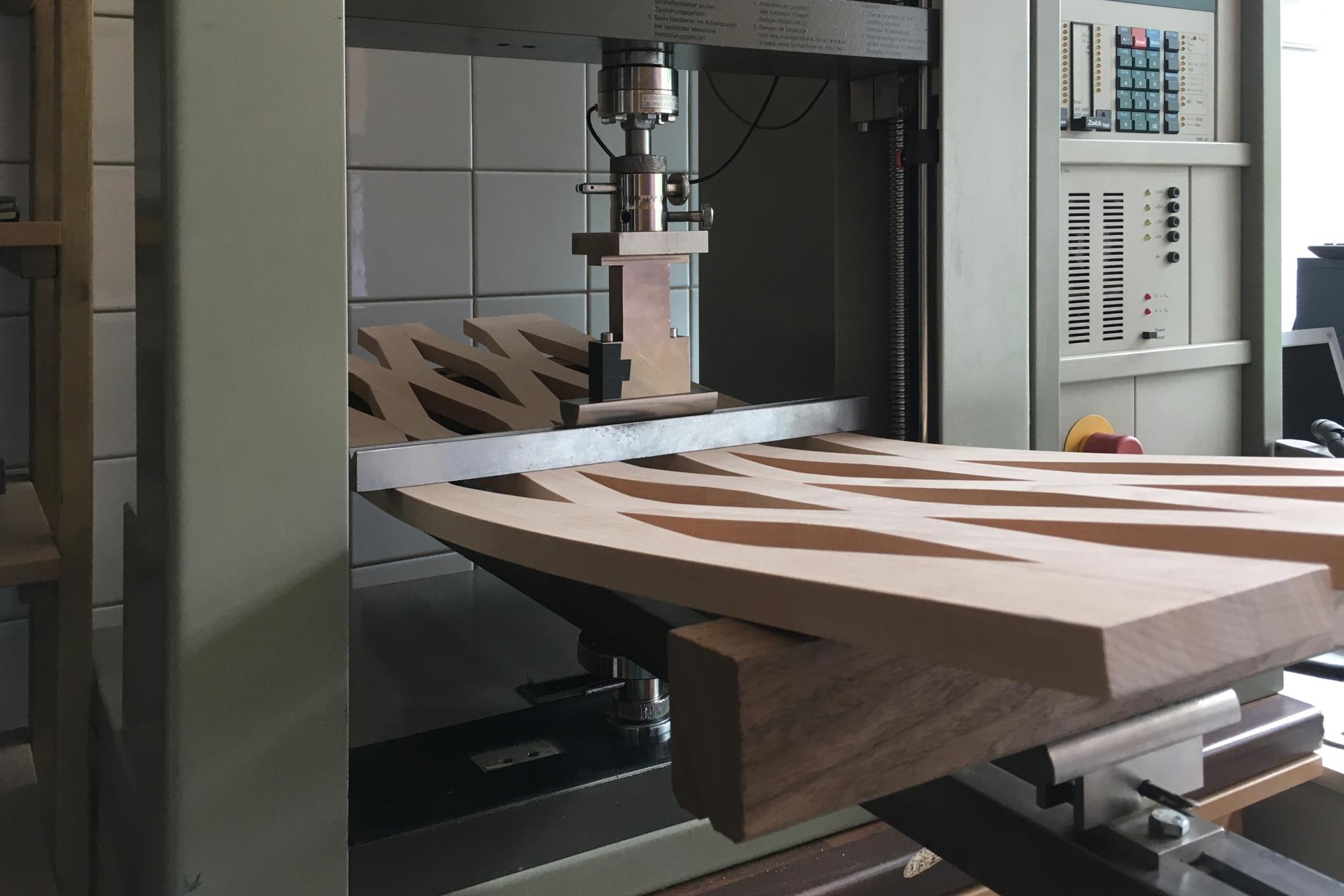EXPANDED WOOD
Basic information
Project Title
Full project title
Category
Project Description
EXPANDED WOOD is an openwork material made out of solid wood which maintains its original strength but significantly gains width and minimally loses weight. The material uses raw wood in a more efficient way that can help to reduce deforestation.
The panel consists of curvilinear wooden slats, which are joined together with an offset creating oblong, hexagonal mesh. The gaps between slats help to reduce the amount of raw wood used for production of the material by more than a quarter.
Geographical Scope
Project Region
Urban or rural issues
Physical or other transformations
EU Programme or fund
Which funds
Description of the project
Summary
EXPANDED WOOD possesses similar firmness to solid or glued wood; however, it is created using less stock. This new material is made by cutting wood into curvilinear slats and laminating it, forming a hexagonal mesh with oblong gaps in-between elements. The gaps between slats help to reduce the amount of raw wood used for production of the material by more than a quarter. The openwork panel is also 25 percent lighter than regular solid or glued wood that it's made of, however it preserves similar durability to bending.
The board is cut using computer-controlled devices such as a computer table milling machine or a robotic arm equipped with a router bit. This technique allows for the quick, precise and repeatable production of complex shapes. The second and third phase of production, that is, moving or rotating the elements, applying the glue and fixing the elements while the glue is bonded, can be done automatically or manually. The trapezoidal curve can have various shapes, proportions and dimensions as well as the radius of rounding the vertices.
These processing and manufacturing solutions have been used successfully to transform metal sheets into expanded mesh and honeycomb structures for over a century. Now, applying these solutions to wood has created EXPANDED WOOD. The resulting panel is made of wood and retains all its natural properties. The technique produces a material of greater width and lower weight without losing the strength of the raw wood. This material outcome fits within the strategy of material efficiency and potentially makes wood more economically attractive than other carbon-dioxide-intensive materials. In the long term, the project may translate into a reduction in demand for wood and an improvement in the overall condition of the environment.
Key objectives for sustainability
Due to its new physical features as well as higher material efficiency, EXPANDED WOOD can serve as a more sustainable replacement for carbon dioxide-intensive materials like plastic, metal, or concrete.
Timber can be, and very often is, more environmentally friendly than other materials. Due to its renewability and to carbon stock fixed in wooden products, timber is far more sustainable than plastic, metal, or concrete. Replacing these materials with wood could slow down or maybe even stop climate change. Naturally, using wood as a replacement for other carbon dioxide-intensive materials would increase wood production; if sustainable forestry is implemented, this could be a positive change. However, for wood to be a viable replacement material in a broad range of contexts, we need to develop new ways of processing wood to produce new physical features in the final material. Identifying and exploring these new processes and physical features is the main goal of this project.
Key objectives for aesthetics and quality
EXPANDED WOOD is distinguished by a characteristic oblong hexagonal pattern of the mesh, which is shaped by the laws of physics and geometry as well as the hand and eye of the designer.
The material, due to its openwork structure, is satisfying both to use and to look at. With its rhythmical complexity, it seems to look a bit different every time we see the material. Depending on the angle, light, or background, the structure appears very open or nearly solid. Sometimes the grid seems oblong and sometimes it looks almost square. The thickness of the panel seems to change, too. The unique form of the mesh originates from two revolutionary inventions: expanded sheet metal, invented in 1883 by John F. Golding, and honeycomb panels, created in 1890 by Julius Steigel. The grids developed by these two inventors were combined with traditional Slavic and Scandinavian crafts and patterns, which inspired the final shape of EXPANDED WOOD.
Key objectives for inclusion
EXPANDED WOOD has a strong haptic quality that can be appreciated by hands or other parts of the body as well as the eyes. This makes its beauty accessible for people who are blind or visually impaired. Due to its tactile nature, it’s also an engaging material for children.
The body perceives the mesh as a pleasant texture, with the pattern’s regularity giving the material a special haptic quality. The eyes are not enough to recognize the complex geometric shapes of the openwork. The hexagonal mesh encourages touching. People want to experience the mesh with their hands, regardless of whether they can or can’t see, and quickly begin to wander over the clearly defined surfaces. The fingertips slide along the regular borderlines of the mesh, experiencing planes, edges, and vertices.
Results in relation to category
EXPANDED WOOD is a lightweight, efficient and renewable material. As a sustainable alternative to plastic, metal or concrete, it can contribute to the transformation of the industrial ecosystems towards more sustainable practices in a spirit of circularity.
EXPANDED WOOD is a new process giving a new nature-based material, which finds its application in the building, interior and furniture industry. Openwork panels have a strong haptic quality, which can be perceived no only by the sense of sight but also by tough. Due to this tactility its beauty is accessible for people who are blind or visually impaired. The material can be produced out of locally harvested speeches of wood, which makes it more sustainable and affordable.
How Citizens benefit
EXPANDED WOOD was created in collaboration with local artisans and in consultation with a wide range of international scientists and representatives of the wood and furniture industry.
A broad spectrum of stakeholders ranging from material engineering experts to fine artists brought to this project not only interdisciplinary expertise but also diverse perspectives. This range of experience encouraged utilization of the full potential of local manufacturers and ensured the satisfaction of the needs of diverse groups of consumers. The first series of physical bending tests was conducted by Albert De Bonis, Ph.D., from Wood Advisory Services, Millbrook, New York. The second series was made by Magdalena Majnusz under the supervision of Professor Jerzy Smardzewski, Ph.D., from Faculty of Wood Technology at Poznań University of Life Sciences. The final prototypes of furniture were fabricated by Magdalena Majnusz and Łukasz Lisowski.
Physical or other transformations
Innovative character
EXPANDED WOOD is the first structurally sound honeycomb material made entirely out of wood with very little material waste and labor.
Reducing raw material usage and utilizing lightweight wood-based materials are two emerging needs in manufacturing. EXPANDED WOOD satisfies these requirements due to its openwork or sandwich honeycomb panels. Openwork panels of wood and wood-based materials currently used in the construction, furniture, exhibition, and interior finishing industries are made in two ways. The first way involves removing material from a solid plate—for example, by drilling or milling openings—which results in losses of large portions of the material. The second method consists of forming a truss by crossing longitudinal elements arranged in parallel in at least two layers. This method results in low material wastage but is laborious or requires complex instrumentation. The most popular sandwich honeycomb panels used in furniture or door production require a combination of materials, which makes them harder or even impossible to reclaim. EXPANDED WOOD addresses all these issues. The material is easy to produce, made entirely out of one renewable material, and produces zero waste.
Learning transferred to other parties
The process of material expansion developed for EXPANDED WOOD can now be transferred to other environmentally friendly materials like bioplastics or paper pulp.
The process of developing EXPANDED WOOD has also resulted in a new method of working with materials that can be applied to other projects. Development of EXPANDED WOOD blended cognition of sensory needs with quantitative data. Research and design based on both experiencing a material with the senses and examining a material through empirical testing can serve as a helpful tool for other designers.

